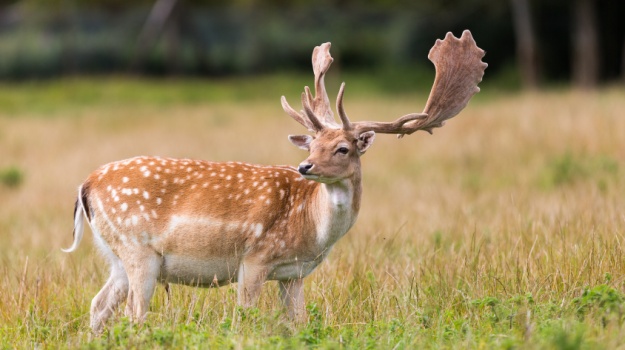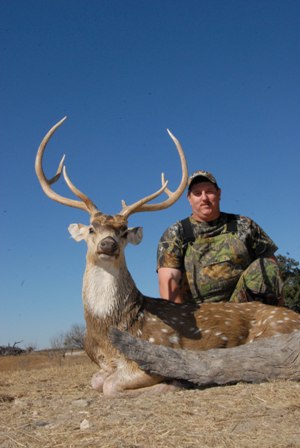
Editor’s Note: Les Motheral has been a Mossy Oak Pro for the last 4 years, lives on the north side of Fort Worth, Texas, and has been hunting whitetails for 30 years. He’s a whitetail guide at the Monarch Ranch. When we asked Motheral to name his favorite Mossy Oak pattern, after a long pause, he said. “I wear different patterns, depending on where I'm hunting, the time of the year and the game I'm hunting. Each Mossy Oak pattern is really designed for a different purpose and a different type terrain. Probably, the pattern I use most often is Break-Up, because it’s a more-versatile pattern than some of the other patterns.”
My favorite exotic animal to hunt is the axis deer. I love to bow hunt, but I hunt axis deer with a rifle. I have a friend who has 100 acres in Kerrville, Texas, with low fences. All the exotics that come on his property are free-ranging. One day when I was down there hunting, an axis buck appeared. When I saw the beauty of that animal and took a really-nice axis buck, I became excited about hunting them. But the deal closer for me was when I cooked that delicious axis meat with no gamey taste that whitetail meat often has. I liken the flavor of the axis meat to beef. The big surprise for me is how melt-in-your-mouth tender most of the axis meat is.
I like to hunt the axis deer, other exotics and whitetails with a .270 Winchester Short Magnum. Even though the axis is a deer, they have the horn structure of an elk. However, the axis deer’s antlers are more vertical than an elk’s, and they don’t have as many points as elk often do - perhaps only have 6-8 points coming off the main beams. But their main beams are very-long. If the main beams are 30 inches or more, the animal is considered a nice trophy axis deer. Also, they have that beautiful white spotted coat. Although I enjoy hunting free-ranging axis deer, they aren’t as patternable as whitetails. If you hunt them on some of the ranches in Texas, especially in some of the large high-fence ranches that have larger numbers of axis deer, they're easier to hunt and take than the free-ranging axis. On some of the high-fence ranches in south Texas, you often may see 40 or 50 axis deer in a day.
 Another exotic deer that has taken hold here in Texas is the fallow deer that have moved up north of the Dallas/Fort Worth area. Several months ago in Denton, about 45 minutes north of Fort Worth, a white fallow deer was running around in town. A man driving down the street spotted the deer and started taking pictures of it, following the deer through a neighborhood.
Another exotic deer that has taken hold here in Texas is the fallow deer that have moved up north of the Dallas/Fort Worth area. Several months ago in Denton, about 45 minutes north of Fort Worth, a white fallow deer was running around in town. A man driving down the street spotted the deer and started taking pictures of it, following the deer through a neighborhood.
As I've explained before, there is no hunting season on Texas exotics. But because the landowners are more or less protecting these animals and allowing them to multiply, we’re starting to see more and more of them moving from south/central Texas to other parts of the state.
Although there are some nilgai that are free ranging like the blackbuck, axis and fallow deer, the largest population is on the King Ranch. Many people go to the King Ranch specifically to hunt the nilgai. I have a friend who hunts them regularly. He says that they’re very elusive and fun to hunt. He considers the cost he pays to hunt worth it - especially for the meat. Nilgai are probably some of our biggest exotics. Most people who never have hunted nilgai before may think that because they are so big that they’ll easy to hunt. However, these critters have very-keen noses, they’re often found in thick cover, and they can move very quickly.
If you want to experience an inexpensive exotic hunt in Texas, you must know a landowner who will give you permission to hunt the exotics. Most of the exotics in Texas are taken on the ranches that advertise for exotic hunts - especially in the Hill Country that specialize in exotic hunts. You can find many places to hunt on Craig’s List.
Day 2: Learning the Good News and the Bad News about Hunting Exotics in Texas
Tomorrow: Calling Deer on a Trophy Whitetail Ranch



























